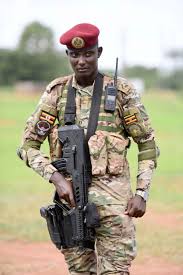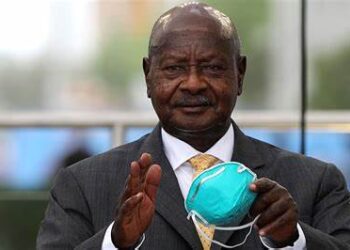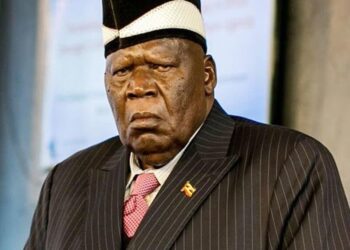By CHANGE OF GUARDS
In June 2006, Museveni ordered his son, Gen. Muhoozi, to establish a Commando Unit within the Presidential Guard Brigade (PGB), then under the latter’s command. It commenced with an initial squad of 250 personnel and established its base at Ruhengyere government ranch in Kiruhura. Over time, it expanded to battalion level and was designated as the 1st Commando Battalion, also known as Camp Rufu, in honor of Museveni’s younger brother, Gen. Caleb Akandwanaho Rufu, a.k.a. Salim Saleh. In May 2021, Museveni elevated it to brigade level during the pass out ceremony for 1,256 new personnel. The event notably lacked the presence of the nominal Minister of Defense; instead, his wife inspected the day’s combat drills demonstration. Consequently, the first public appearance by Museveni’s son, upon assuming the role of army chief, was to inaugurate the administration block at Camp Rufu, a.k.a. 206 Commando Brigade Training Centre.
Considering the geographical location of the camp, situated in Museveni’s stronghold of Kiruhura within the Cattle Corridor, it’s evident that this military base serves as Museveni’s strategic final defense line. His strategy entails that in the event of any attempt to militarily remove his family from power, the Commando Brigade will serve as the ultimate safeguard. It guarantees the security and stability of residents across the entire Cattle Corridor region. The unit relies on their support in times of need. Additionally, if the family rule were to be successfully overthrown, the unit would lead efforts to reclaim power. Hence, it wouldn’t be surprising if this same entity soon becomes the hub for his elite Special Forces Command (SFC).

During the Tutsi-dominated rule in Burundi, Camp Muha, situated in the heart of the capital Bujumbura, served exclusively as a Tutsi military stronghold. It housed the 1st Military Region, comprising support units such as the notorious 11th Armoured Battalion and the 2nd Commando Battalion. When Melchoir Ndadaye became the first Hutu president of Burundi in 1993, Tutsi soldiers from Camp Muha assassinated him before he could mark his first 100 days in office. In July of the same year, Lt. Col. Slyvester Ningaba of Camp Muha’s 2nd Commando Battalion led a failed military coup attempt. Three months later, in October 1993, Tutsi soldiers from Camp Muha’s 11th Battalion raided the presidential palace, seizing President Ndadaye and brutally executing him at Camp Muha. The coup plotters reportedly sought refuge in Uganda, where they received high-level state protection. This event triggered prolonged ethnic violence, with Camp Muha playing a central role. The peace process introduced an integration agenda for both the Tutsi-dominated government army and the Hutu-dominated rebel forces. However, even the newly established Hutu-led transitional government faced challenges in integrating Camp Muha, as the camp remained inaccessible to the new administration for years.
Foretold is forewarned.
INFORMATION IS POWER AND THE PROBLEM OF UGANDA IS MUSEVENISM






Discussion about this post